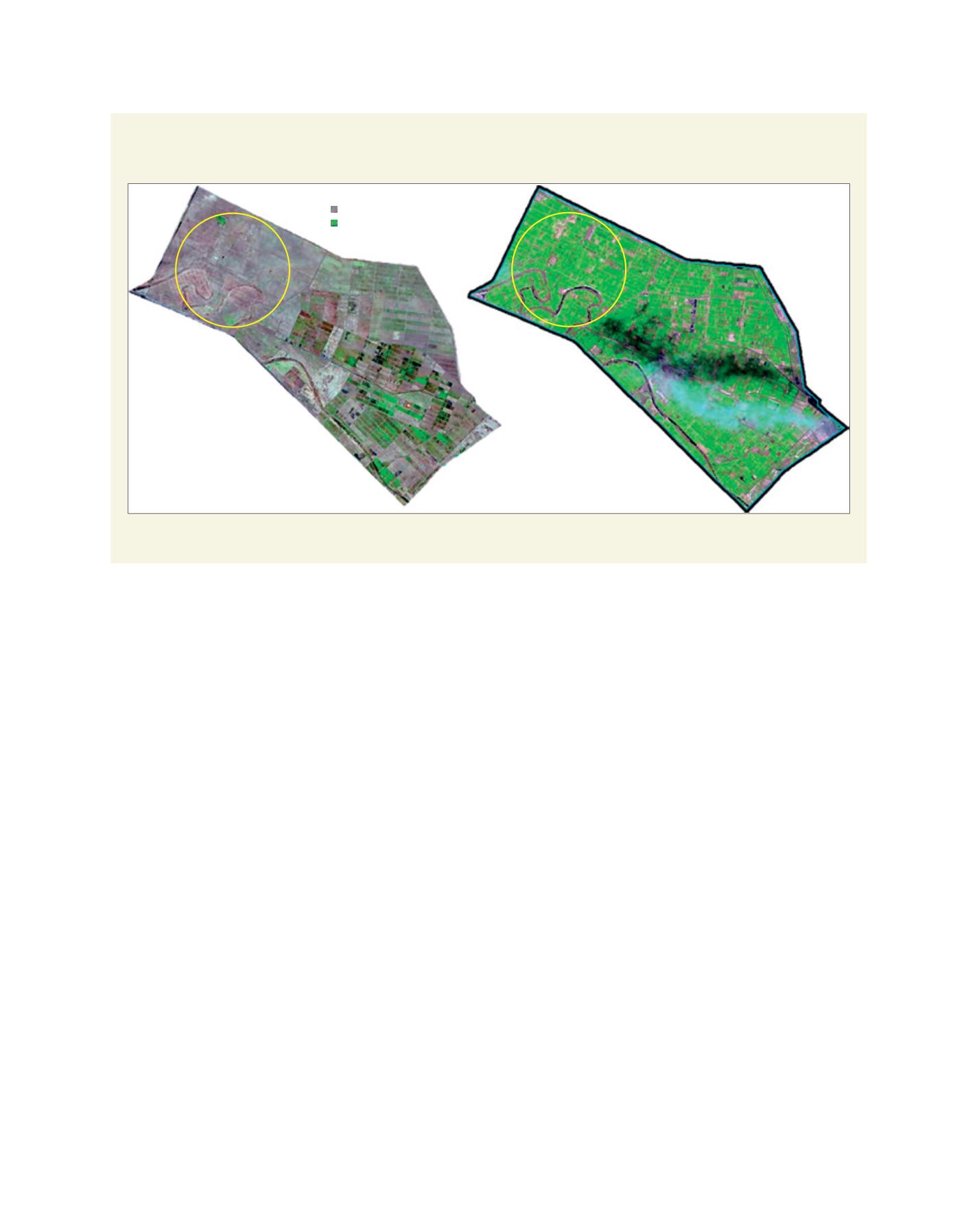

[
] 139
research and science — along with indigenous knowledge
— can offer technically viable and economically feasibe long-
term solutions to combat desertification in the drylands while
enhancing economic growth, alleviating poverty and using
natural resources sustainably. Examples of such accomplish-
ments abound.
ICARDA’s most successful ‘science for impact’ experi-
ences have relied on using holistic integrated human and
agrosystems approaches. Such integrated approaches
produce robust bodies of new knowledge, technologies and
practices synthesized from three main research and prac-
tice domains, namely natural resource management; crop
and livestock genetic improvement; and socioeconomics,
policy and institutions. Through their integration, ICARDA
and its partners in national programmes are tackling the
complexity of the challenges on the ground and achiev-
ing large-scale impact, particularly when this integrated
agrosystems approach is tailored to the different agro-
ecological zones in the drylands with different agricultral
livelihood systems such as pastoral/agropastoral, rain-
fed, tree-based and irrigated production systems. Using
integrated agrosystems approaches also requires the collab-
oration of various stakeholders including multidisciplinary
teams of researchers, farming communities, pastoralists,
policymakers, civil societies and private and public sector
actors. Below, we have shared two examples where such
an approach has been particularly successful at ICARDA.
Salt-affected soils in Iraq
In 2013/14, biophysical and social scientists from
ICARDA, together with scientists from the Iraqi Ministry
of Agriculture and the Ministry of Agriculture and Water
Resources of the Iraqi Kurdistan Region Government,
adopted an integrated approach to combat land and
water degradation caused by salinity. The project, which
aimed to improve agricultural productivity and liveli-
hoods in Iraq, was funded by the Australian Centre for
International Agricultural Research, AusAID and the Italian
Government. It followed two complementary approaches
for adaptation, namely managing salinity (such as leach-
ing salts added with irrigation water by drainage and
other means) and living with salinity (such as planting
halophytes and salt-tolerant plants). The collaborative
research focused on saline water management; salt-affected
soil and water management; and plant management and
adaptation of agricultural production systems to salinity.
Multidisciplinary teams of scientists worked side-by-side
with smallholder farmers to test the impact of soil salinity
and water management as well as the management of crop
adaptation to salinity. Through a combination of interven-
tions such as regional irrigation and drainage management;
reclamation; salt extraction; salinity prevention and shift-
ing agriculture systems to grazing; biosaline agriculture
and agroforestry at watershed; irrigation district and field
scales, agricultural productivity in salt-affected soils had
improved significantly by 2014, compared to 1984 before
any salinity reclamation efforts were implemented.
Parallel to these efforts, the project also researched fodder
species that thrive despite salinity and drought stresses and
are palatable to the livestock. Various fodder species were
tested by the local communities of Iraq’s rangelands. A pitter
seeder was developed by ICARDA scientists to make a series
Landsat satellite images of pre- and post-salinity reclamation in Dujaila, Iraq, showing significant
improvement in agricultural productivity by 2014
Source: ICARDA/NASA
Pre-salinity reclamation period
(April 1984)
Post salinity reclamation period
(April 2014)
Active or healthy farmlands
Saline or abandoned croplands
L
iving
L
and
















